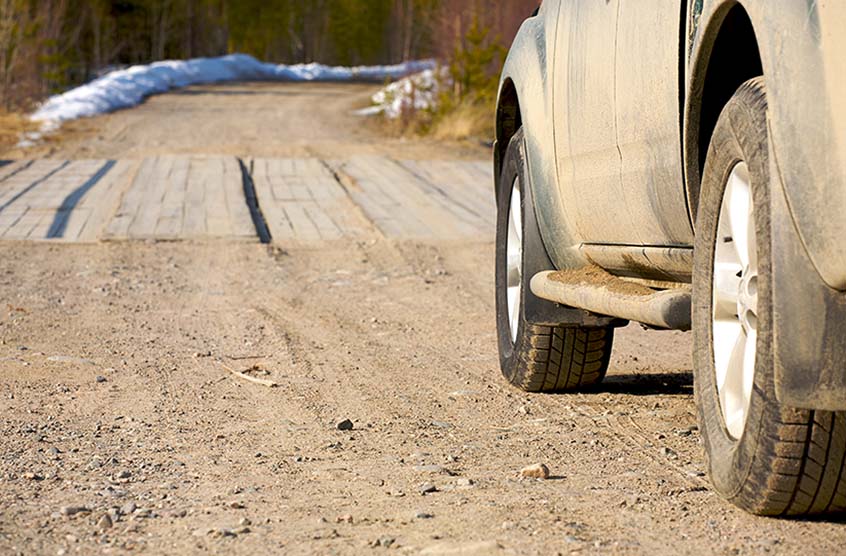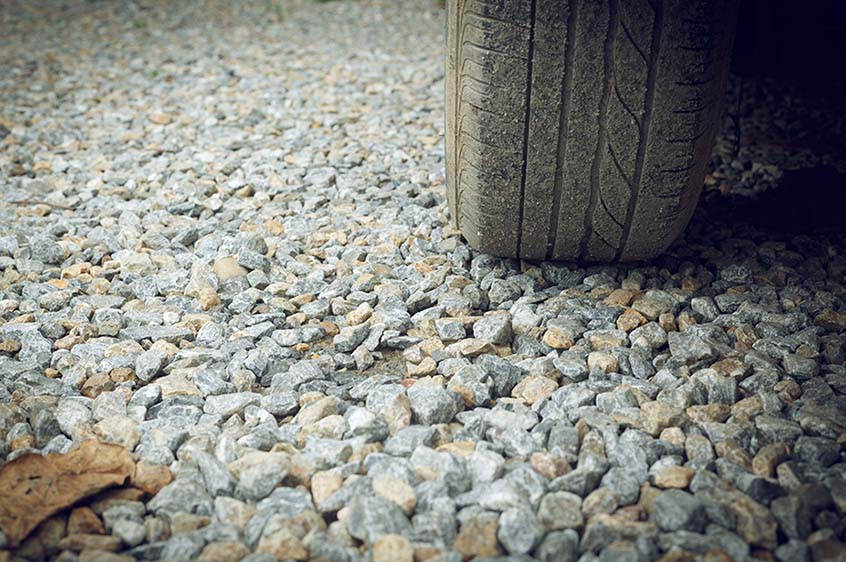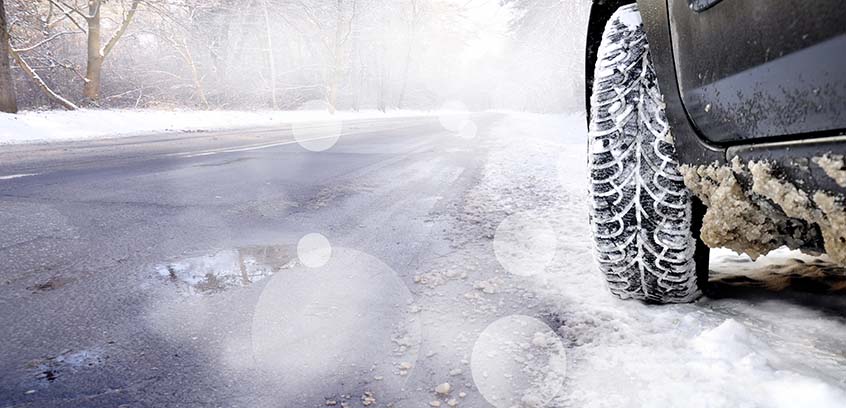No matter where you may roam, the best way to stay safe and take care of your car is to know what lies ahead. Here’s a breakdown of tips and tricks for a variety of surfaces to keep things under control.
Dirt

The first rule on a dirt road, as with most unpaved surfaces, is to take it easy. Drive slowly, stay focused, and be prepared for sudden stops.
If you lose traction at any point, brake softly or steer gently instead of trying to swerve and brake heavily. Swerving and braking together may cause trouble.
And if you’re in a caravan, don’t follow the person in front of you too closely. There’s a good chance you’ll all kick up some dust, so it might be hard to see. And if you don’t have permanent headlights on your vehicle, keep those lights on at all times to see better in shady and enclosed areas.
Gravel

The biggest issue you’ll face on a gravel road is traction. Loose gravel won’t give you the traction of a paved road, so approach with caution. If you start to skid at any point, release the accelerator or brakes and steer yourself back on course.
Drive slowly, accelerate and brake slowly, and certainly avoid sudden changes in direction if at all possible. High speeds will cause you to lose control thanks to the lack of traction.
Sand

Thinking about driving in sand with a front-drive vehicle? Don’t. You’ll almost instantly dig yourself into the sand. Rear-wheel drive does a little better, but you’ll want a four-wheel drive vehicle if at all possible.
Whatever vehicle you end up using, make sure to let some air out of your tires—much lower than you’d use on pavement.
Once you get driving, avoid sharp corners, as this requires more push from your vehicle.
If you happen to get stuck in the sand, don’t spin your tires! This will only make matters worse. Instead, just back up slowly and put a floor mat or similar surface under the tires to create traction. If you’re near a body of water, wetting down the path of your tire can help solidify the sand enough to clear it.
Ice

An icy road is one of the most dangerous situations for drivers, and it’s best to avoid at all costs. Or at least equip your vehicle with a set of tires made for snowy conditions.
If you do find yourself on the road, it’s crucial to drive slowly. As in really, really slowly. And don’t make any quick movements either, like jerking the wheel, accelerating hastily, or slamming the brakes.
Speaking of brakes, if you start to skid, don’t brake instantly. Instead, let the accelerator off gently, allow the car to straighten out by keeping the wheels pointed forward, and press the pedal lightly but securely to activate the antilock braking system. If the pedal starts to vibrate, that’s the ABS doing its job.
- Valvoline does not endorse any of the products or manufacturers listed above. Use at your own risk.
- Prior to using or installing any of these products always consult your vehicle’s owner’s manual for compatibility and warranty information.
- Valvoline does not guarantee, approve or endorse the content available on linked sites.
- Always take appropriate safety precautions when working on or operating your vehicle. Take the necessary steps to help prevent injuries; always use protective gear like helmets, safety goggles, and gloves.


Don't miss out on new content
Thanks for signing up. Set your password and start earning reward points for everything you do on the site.
You already have a Team Valvoline account. Sign in here.
Did you forget your password?